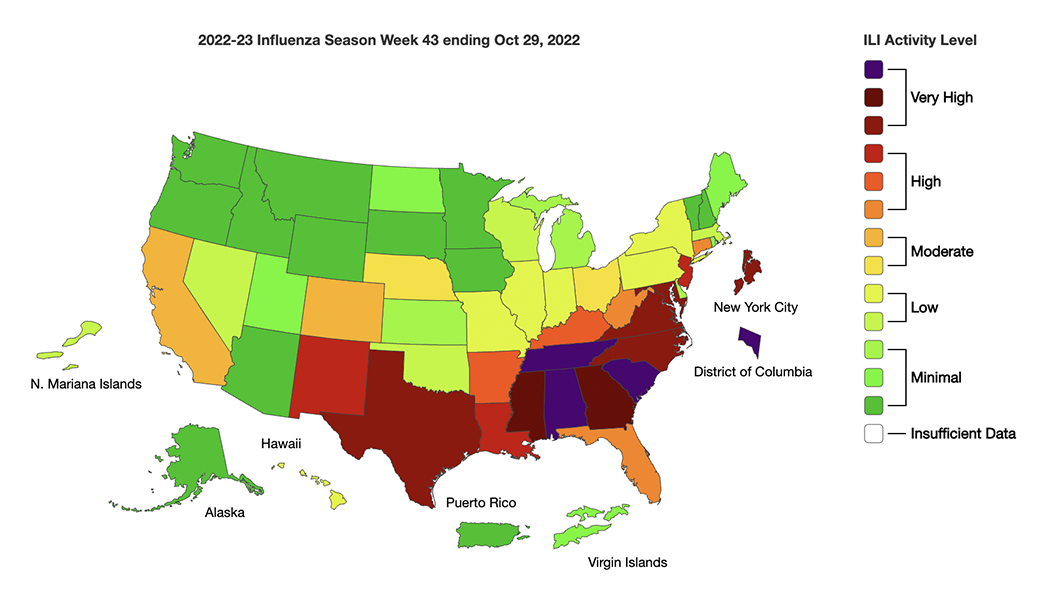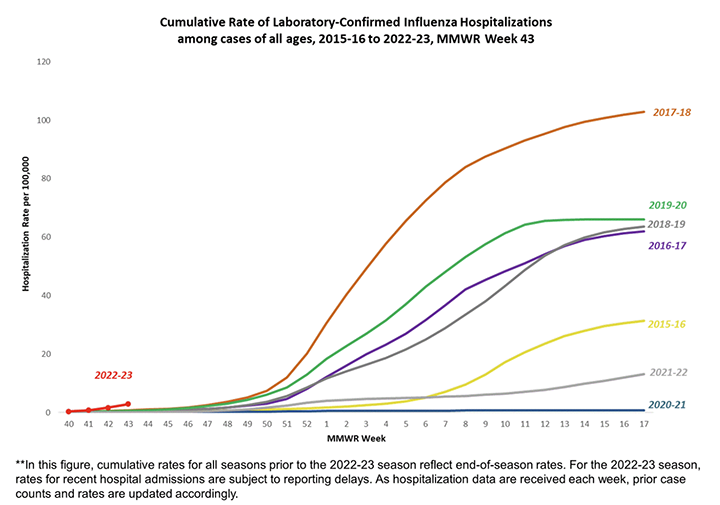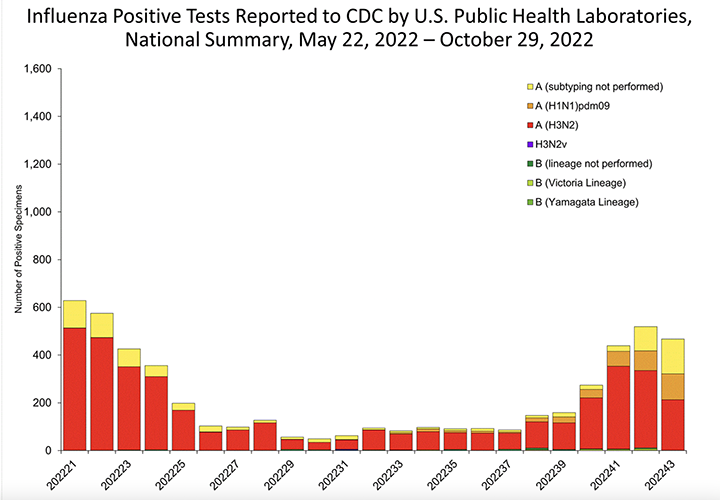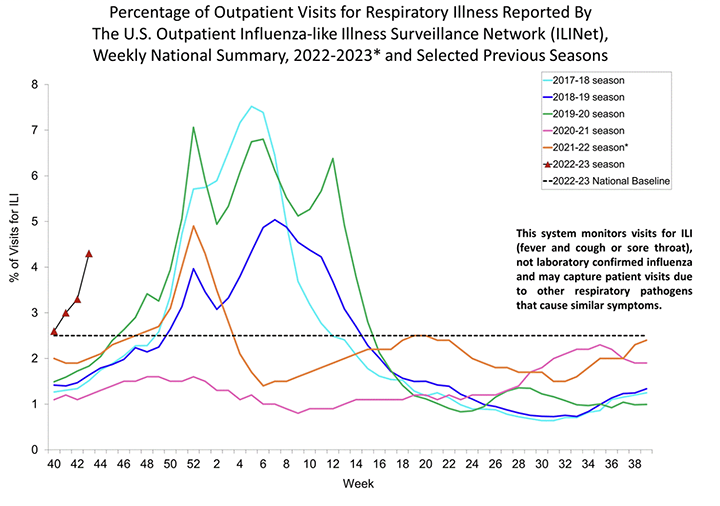This map shows how many influenza-like illnesses have been recorded in the United States. South Carolina is one of four states with the highest level of illness. (Graphic courtesy of the CDC)
South Carolina’s flu season is particularly bad this year, health officials and data say, with current deaths and hospitalizations already surpassing totals from the past two years combined.
“This has been one of the more severe starts to a flu season we’ve seen in a while,” said physician Jonathan Knoche, a DHEC Medical Consultant.
The state has seen more than 8,600 cases this season, Knoche said. Last year, there were only 53 confirmed cases at this point in the season and 15 cases during the 2020-2021 season.
DHEC thinks this wave of influenza is spreading more effectively than in previous years due to a fall off of COVID-related mask-wearing. Data from the Centers for Disease Control in Atlanta suggests this influenza season could be the worst the United States has seen in five years.
“An influenza A strain is transmitting and circulating easily this season,” Knoche said. “Although the flu vaccine targets this strain, many people remain unvaccinated at the beginning of this flu season.”
There have been 1.6 million illnesses, 13,000 hospitalizations, and 730 deaths from the flu this season nationally, according to the CDC. The hospitalization rate is higher now than in any other season since 2011, according to data from the CDC’s Fluserv-NET system.
In South Carolina, there have been 423 influenza hospitalizations and five deaths, according to DHEC. There were 25 overall hospitalizations and no deaths in the past two seasons combined.
“COVID-19, flu, and RSV are circulating across our state,” Knoche said. “So, while we recommend the flu vaccine to prevent severe cases of the flu, we also recommend residents get their initial COVID-19 vaccination and stay up to date on boosters.”
Each influenza season is unpredictable, according to Adolfo García-Sastre, director of the Center for Research on Influenza Pathogenesis.
“The severity of each influenza season is not predictable,” García-Sastre said. “(On) average there are 30,000 deaths in the U.S. from (the) flu each year. But this can vary from 5,000 to 80,000. In general, it depends more on the number of circulating viruses (infections) than on differences in each variant from year to year.”
There has been some research on the effects of long-COVID on the immune system, but it is too early to tell, García-Sastre said.
“Some of the cases of long-COVID might involve immune dysregulation, but we do not understand yet how many cases, and the reasons for that,” García-Sastre said.
CDC research has found Black, Hispanic, and Native American adults in the United States are more likely to be hospitalized with the flu — as well as less likely to be vaccinated against the flu. That can be due to a number of reasons, such as lack of access to healthcare, missed opportunities and misinformation or distrust.
The CDC is working to raise awareness of the dangers of the flu and encouraging people to get their shots.
“Flu vaccines are the best way to protect against flu and its potentially serious complications,” said Debra Houry, the CDC’s acting principal deputy director. “Improving access to and trust in flu vaccines among people is critical to help reduce inequities.”
This graphic shows the number of confirmed influenza hospitalizations in the United States this season. (Graphic courtesy of the CDC)
This graphic shows the number of positive influenza tests reported to the CDC in the United States this season. (Graphic courtesy of the CDC)
This graphic shows the number of outpatient visits for respiratory illnesses in the United States this season. (Graphic courtesy of the CDC)





